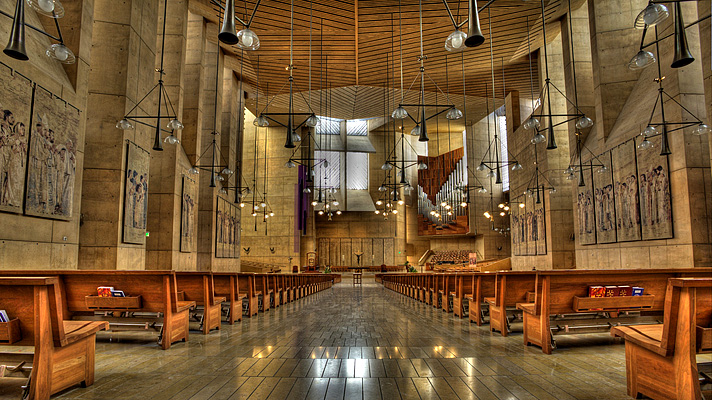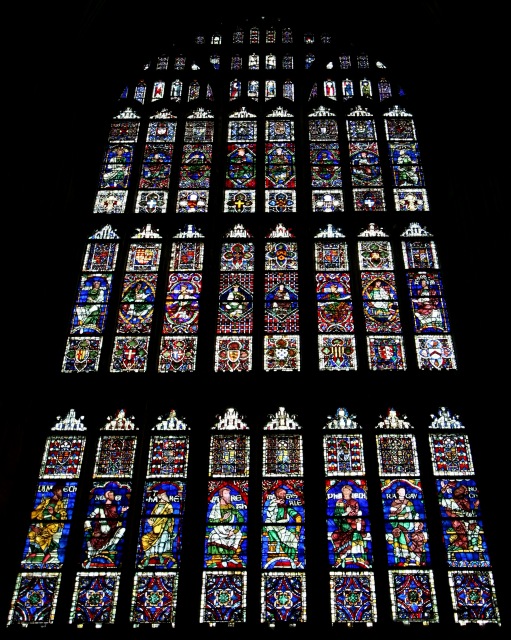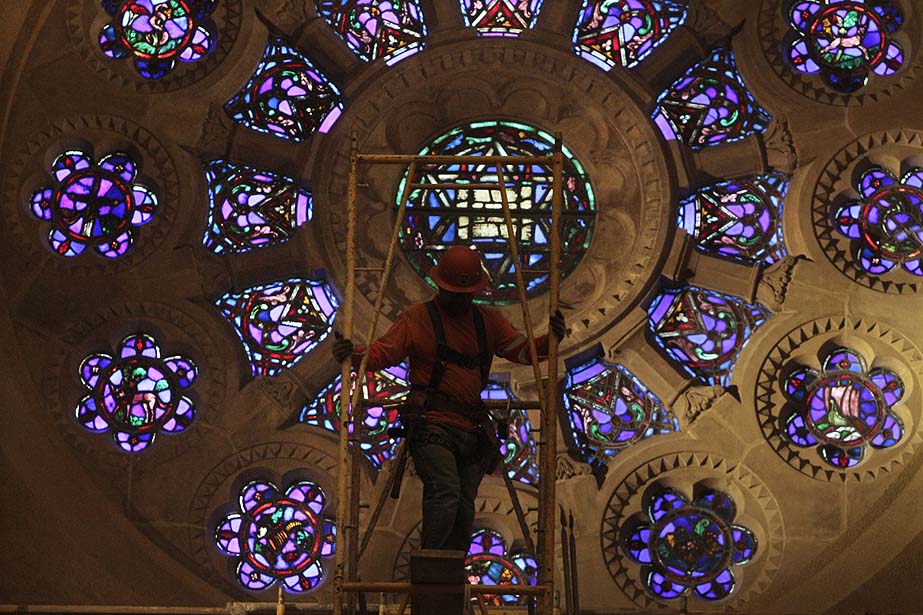Medieval England brings to mind Monty Python and the Knights of the Round Table – but in trying to understand the context of Canterbury and St. Albans: Treasures from Church and Cloister, a new show at The Getty Cultural Center, we had to dig into both literature and history. Starting with The Canterbury Tales and ending with the story of Saint Thomas Becket.

For those of you who remember, these are Chaucer’s charming tales told by pilgrims who are traveling to the the Canterbury Cathedral to pay homage to Saint Thomas Becket. Not many kids have to read them in high school any more, but you can brush up on the classic by picking up one the many editions of Chaucer’s tales in the gift shop. A visit to this show prompted us to do a little homework on the story of Thomas Becket, the Archbishop who became a Saint after having been murdered in the Cathedral. Becket disagreed with King Henry II about the direction to take the Church and the King’s knights slayed the Archbishop at the alter of the Cathedral. For this reason, pilgrims came from all over the world to worship at the Canterbury Cathedral, and Chaucer chose this venue for his tales.
The legacy potency of this historical incident was in our minds as we wandered through the peaceful rooms of the chocolate colored galleries. Those who love illuminated manuscript can take some time paging through the St Albans Psalter, which is situated at the start of the exhibit. But the four powerful stained glass panels drew us like a magnet, and we sunk into pew-like seating to gaze up at them. Canterbury Cathedral is being refurbished, so these panels are on a rare world tour – stopping first at The Getty and then heading to The Cloisters in New York. The weight of history really can be felt in the room.
“These are the earliest and finest surviving windows from Canterbury, and indeed from 12th century Britain,” explained Jeffrey Weaver, associate curator of sculpture and decorative arts at the Getty. “Not only are they vibrant examples of the Romanesque style in the late 12th century, they are extraordinarily rare—very little glass from this period remains.”
As we wandered the galleries, we had a sudden urging to make our own pilgrimage to Kent. Having been to Westminster Cathedral in London, and after spending many afternoons in The National Cathedral in Washington D.C. (which was modeled after Canterbury), we admit to having a big crush on cathedrals.
Just take a look at Canterbury Cathedral’s own Virtual Tour… and you’ll see why.
But what we really wanted, after appreciating the history and the beauty of the ancient panels, was to see them in situ in Kent.
We don’t have a grand traditional cathedral in LA, but the Cathedral of our Lady of Angels, the Catholic church downtown, is the 10th largest church in the world and certainly fits the bill for a spectacular spiritual space. It’s sleek and modern lines are a dramatic contrast to the ornate churches of old. It is peaceful and majestic, and worth a trip downtown to see.
The Wilshire Boulevard Temple has just been restored to it’s full Byzantine glory, including this new Rose Window of stained glass. The Temple, built by the scions of Hollywood, includes murals of Jewish History created by Hollywood art director. Here’s a recent article from the LATimes about the restoration and how the congregation is reaching out to their community.
Other rooms in the Getty galleries explore the techniques of stained glass and manuscript illumination and would be fun for kids (and adults) who like crafts. We learned how paper was made 1000 years ago, and marveled at the amount of labor that preceded the stroke of a single brush. Words were important — to Becket and the King, to the monks who labored over their illuminations, and to Chaucer whose stories helped to popularize colloquial English and survive to the present day.



